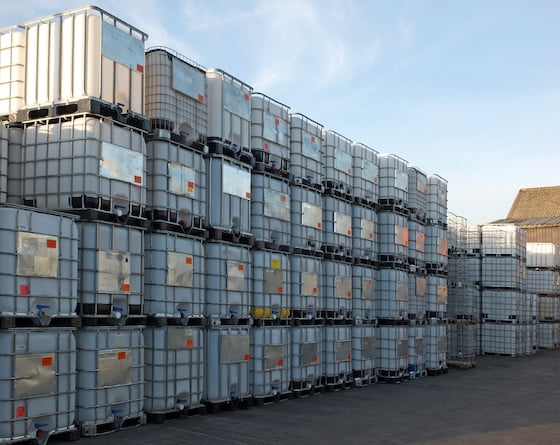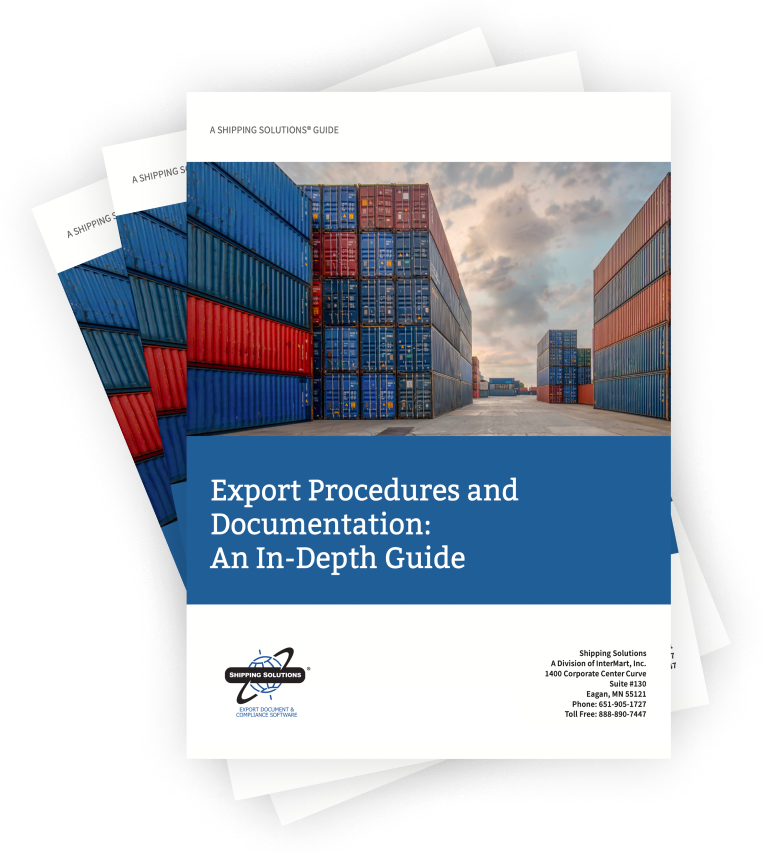The International Trade Blog Export Compliance
International Shipping: How to Safely Transport Liquids
On: August 28, 2023 | By:  Sean Whitworth |
5 min. read
Sean Whitworth |
5 min. read
 This will be the first in a series of articles about the transportation and export of liquids. I’ll be discussing the various methods of shipping and packaging liquids for transport internationally. A variety of containers are used in the transport of liquid, and each one has its advantages for different applications. When shipping liquid it can be useful to ship in larger bulk containers to gain economies of scale, but when that’s not an option, smaller containers can provide a flexible way to ship liquid in regular 53-foot dry vans or standard 20-foot or 40-foot containers.
This will be the first in a series of articles about the transportation and export of liquids. I’ll be discussing the various methods of shipping and packaging liquids for transport internationally. A variety of containers are used in the transport of liquid, and each one has its advantages for different applications. When shipping liquid it can be useful to ship in larger bulk containers to gain economies of scale, but when that’s not an option, smaller containers can provide a flexible way to ship liquid in regular 53-foot dry vans or standard 20-foot or 40-foot containers.
I will first look at the intermediate bulk container. This incredibly useful conveyance for shipping liquid products is the most compatible container for most shippers and logistics systems.
What Is an Intermediate Bulk Container (IBC)?
If you already ship liquid, you may be familiar with the humble intermediate bulk container, also commonly known as a tote. Other names include IBC tote or IBC tank.
IBC totes can be used to ship liquids, pastes, semi-solids and solids. We will focus on the IBC tote as used in the transport and handling of liquid. Totes are used in a variety of industries and applications, including agriculture, construction, industrial lubricants, collecting rainwater and many others.
The two most common totes are the composite 275-gallon and 330-gallon tanks made of a high-density polyethylene (HDPE) inner liner, surrounded by a galvanized steel cage. They take up a similar footprint to a standard pallet of 48” L x 40” W x 46” H. This makes it very easy for dock crews to handle totes with a forklift and move them around as needed. Full totes can be stacked in storage up to three or four high. Each tote will have a metal plate on it with the stack load rating expressed in kg, which indicates the maximum load allowed for stacking above the tote in storage. Note that the stack rating is different in transportation, and this will not usually be an issue since in a normal container or dry van, you would only be able to stack them two units high. However, it is not recommended to stack for transportation without blocking and bracing, or securing the totes with a product like Ty-Gard.
What Kind of Liquids Can Be Transported or Stored in a Tote?
Totes can be filled with many different types of liquids, including water, surfactants and adjuvants for agriculture, pesticides, herbicides, lubricants, gasoline, chemicals, vegetable oils, corn and maple syrup, and many more. Totes are made of a food-grade plastic resin. However, for the whole tote to be considered food grade, all additional parts, such as the valves and gaskets, must also meet FDA requirements.
One other thing to note is that IBC totes are built with a specific gravity rating, which is the relative density related to water. They are typically UN/DOT approved for liquids with a specific gravity of 1.9, which would be 15.8 pounds per gallon. You’ll need to know the specific gravity of your product before using totes.
What Do I Need to Watch for When Shipping Totes?
Leaks and Spills
Any container containing liquid may develop a leak. IBC totes are made of high-quality polyethylene but are still subject to mechanical stress and damage from handling. Make sure your organization has safety measures in place and qualified and trained personnel to handle any leaks or spills.
Tanker Endorsement
Many shippers are not aware that truck drivers that are handling totes in significant quantities may need to have a commercial driver's license (CDL) with a tanker endorsement. This can come as a surprise when a driver arrives at your facility without the qualification and refuses to transport the goods. Tanker endorsement is required in the U.S. by the Federal Motor Carrier Safety Administration (FMCSA) for any shipment where:
- Filled cargo includes individual containers of 119 gallons or more.
- The total combined volume of liquid (or gas) is greater than 1,000 gallons.
For 275-gallon totes, this would mean that any shipment over four totes will require a truck driver to have tanker endorsement on their CDL.
Fumigation
Composite galvanized, plastic and steel IBC totes typically will not require fumigation when exporting. You may have to sign a Fumigation Declaration stating that the packing materials do not require fumigation and deliver that to your freight forwarder with your document package upon export. Check with your freight forwarder or logistics partner on specific guidelines for shipping to certain countries and what the requirements are for fumigation of your packing materials.
What Are the Advantages of an IBC Tote?
- Rectangular, uniform, easy to handle
- Versatile
- Easy to fill and dispense
- Rugged
- Long service life
- Cheap to replace (starting at $300 for a caged tote)
- Washable
- Reusable
- Do not take valuable storage capacity in a large on-site tank or tanker trailer
- Hazardous materials and international maritime dangerous goods (IMDG) are acceptable
- No wooden pallet and may not require fumigation
Are There Any Disadvantages?
- Cleaning costs
- Bulk containers such as Flexitanks can often be faster to load and unload
- Larger containers offer better economies of scale, shipping up to 6,000 gallons at a time.
- Totes must be unloaded and loaded, whereas large containers like ISO tanks are fully intermodal, going from trucks to trains to ships with ease—all without the need for transloading.
Conclusion
Shipping liquid presents a unique set of circumstances that must be addressed to safely and effectively route your liquid products globally. 275-gallon and 330-gallon totes will work for a majority of shippers and receivers, however, totes range in capacity from 110 to 550 gallons and even larger volumes for stainless steel constructed totes. Next time, we will look at the IBC’s larger steel big brother, the ISO tank.
Like what you read? Join thousands of exporters and importers who subscribe to Passages: The International Trade Blog. You'll get the latest news and tips for exporters and importers delivered right to your inbox.

About the Author: Sean Whitworth
Sean Whitworth is a trusted international trade expert for a number of shippers and manufacturers. He currently works in the 3PL space serving clients in a broad range of industries including energy, automotive glass and plastics, textiles, forestry products and more. He has worked as a consultant for importers/exporters assisting with everything from preparing and packaging goods for international transport, booking with freight forwarders, customs formalities and delivery of goods by land, air and sea.
Sean is currently working to develop his career further in international trade by becoming a Licensed Customs Broker.


